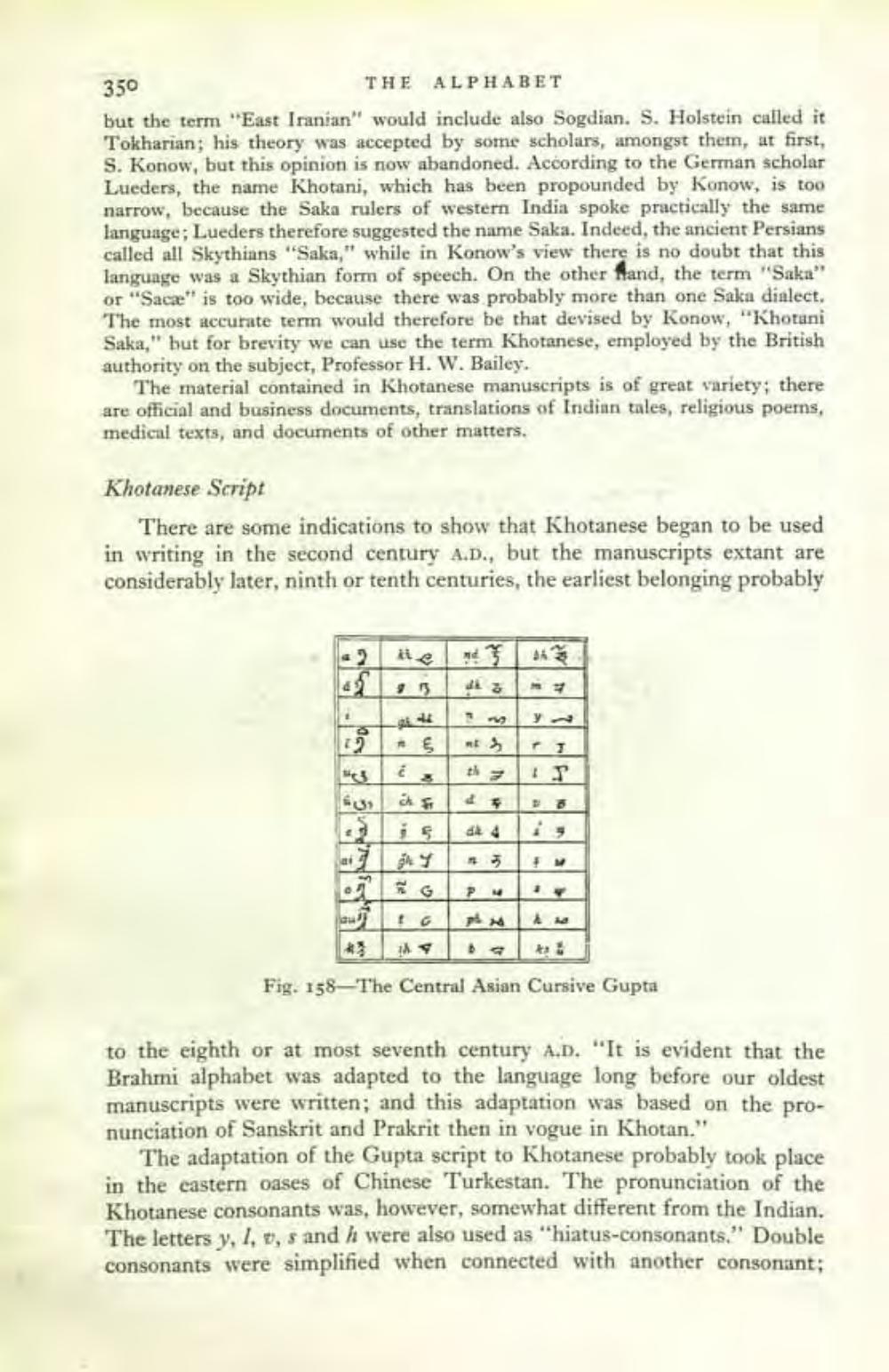________________
350
THE ALPHABET
but the term "East Iranian" would include also Sogdian. S. Holstein called it Tokharian; his theory was accepted by some scholars, amongst them, at first, S. Konow, but this opinion is now abandoned. According to the German scholar Lueders, the name Khotani, which has been propounded by Konow, is too narrow, because the Saka rulers of western India spoke practically the same language; Lueders therefore suggested the name Saka. Indeed, the ancient Persians called all Skythians "Saka," while in Konow's view there is no doubt that this language was a Skythian form of speech. On the other hand, the term "Saka" or "Saca" is too wide, because there was probably more than one Saka dialect. The most accurate term would therefore be that devised by Konow, "Khotani Saka," but for brevity we can use the term Khotanese, employed by the British authority on the subject, Professor H. W. Bailey.
The material contained in Khotanese manuscripts is of great variety; there are official and business documents, translations of Indian tales, religious poems, medical texts, and documents of other matters.
Khotanese Script
There are some indications to show that Khotanese began to be used in writing in the second century A.D., but the manuscripts extant are considerably later, ninth or tenth centuries, the earliest belonging probably
1
2 Me
913
98-44
7 2
* ξ n 2
¿
th
44
da 4
33
12
产品
3
5331
dia
3-4
kr
15
Y
G
: G
14
Fig. 158-The Central Asian Cursive Gupta
P 3
pixs
ba
77
IP
B
is
#
M
14
120
to the eighth or at most seventh century A.D. "It is evident that the Brahmi alphabet was adapted to the language long before our oldest manuscripts were written; and this adaptation was based on the pronunciation of Sanskrit and Prakrit then in vogue in Khotan."
The adaptation of the Gupta script to Khotanese probably took place in the eastern oases of Chinese Turkestan. The pronunciation of the Khotanese consonants was, however, somewhat different from the Indian. The letters y, 1, v, s and h were also used as "hiatus-consonants." Double consonants were simplified when connected with another consonant;




